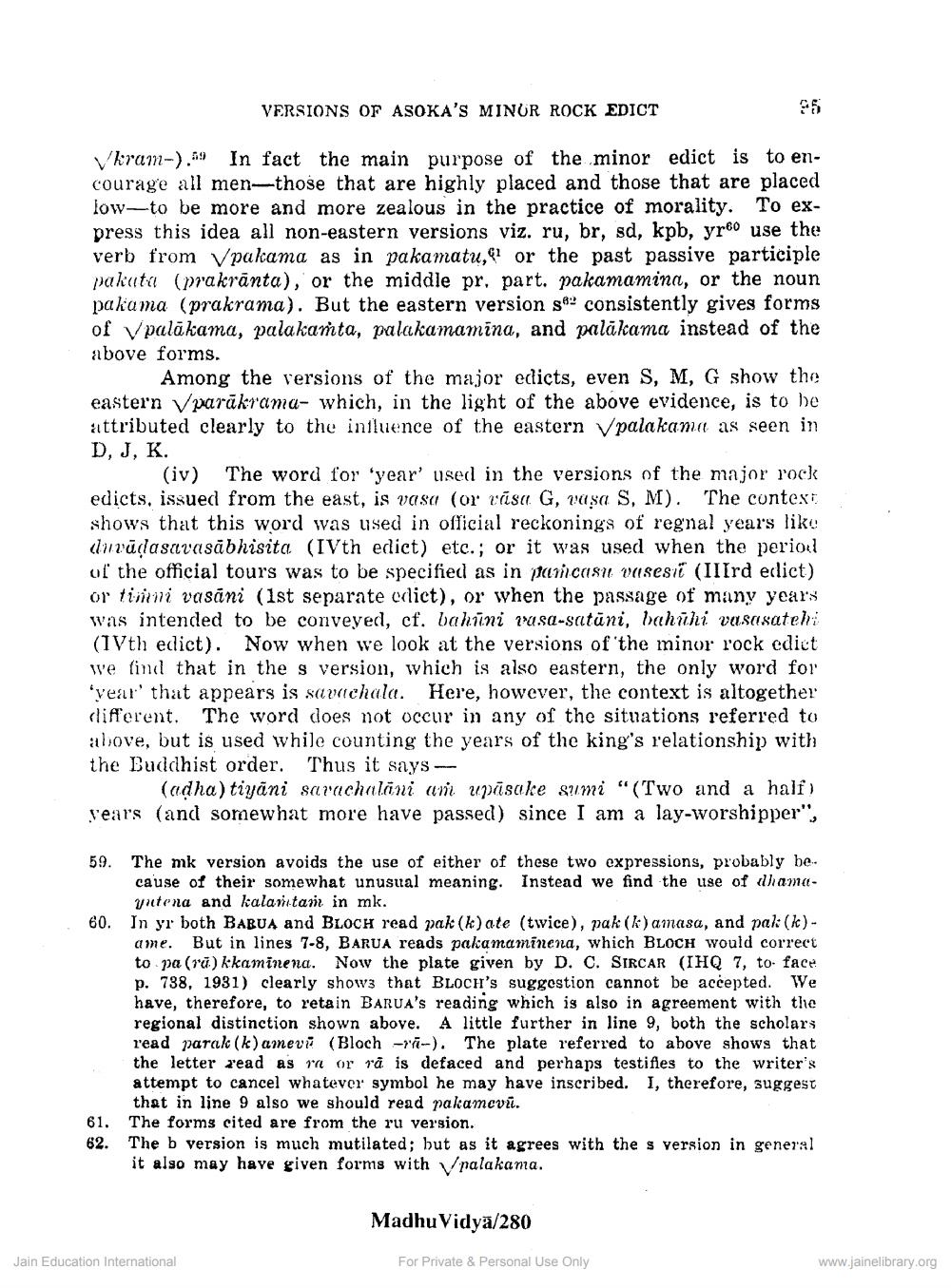________________
VERSIONS OF ASOKA'S MINOR ROCK EDICT
Vkram-).au In fact the main purpose of the minor edict is to encourage all men-those that are highly placed and those that are placed low-to be more and more zealous in the practice of morality. To express this idea all non-eastern versions viz. ru, br, sd, kpb, yro use the verb from Vpakama as in pakamatu, or the past passive participle pakata (prakränta), or the middle pr. part. pakamamina, or the noun pakama (prakrama). But the eastern version s" consistently gives forms of palakama, palakamta, palakamamina, and palakama instead of the
above forms.
Among the versions of the major edicts, even S, M, G show the eastern parakrama- which, in the light of the above evidence, is to bet attributed clearly to the influence of the eastern palakama as seen in D, J, K.
(iv) The word for 'year" used in the versions of the major rock edicts, issued from the east, is vasa (or rása G, vasa S, M). The context shows that this word was used in official reckonings of regnal years like duvāḍasavasābhisita (IVth edict) etc.; or it was used when the period of the official tours was to be specified as in pancasu vases (IIIrd edict) or timini vasani (1st separate cdict), or when the passage of many years. was intended to be conveyed, cf. bahini vasa-satāni, bahihi vasasatehi (IVth edict). Now when we look at the versions of the minor rock edict we find that in the s version, which is also eastern, the only word for 'year that appears is savachala. Here, however, the context is altogether different. The word does not occur in any of the situations referred to above, but is used while counting the years of the king's relationship with the Buddhist order. Thus it says
25
(adha) tiyani sarachalani am upasuke sumi "(Two and a half) years (and somewhat more have passed) since I am a lay-worshipper",
59. The mk version avoids the use of either of cause of their somewhat unusual meaning. yutena and kalamtam in mk.
these two expressions, probably be. Instead we find the use of dhama
60. In yr both BABUA and BLOCH read pak (k) ate (twice), pak (k) amasa, and pak (k) - ame. But in lines 7-8, BARUA reads pakamaminena, which BLOCH would correct to pa (ru) kkaminena. Now the plate given by D. C. SIRCAR (IHQ 7, to face p. 738, 1931) clearly shows that BLOCH's suggestion cannot be accepted. We have, therefore, to retain BARUA's reading which is also in agreement with the regional distinction shown above. A little further in line 9, both the scholars read parak (k) amevi (Bloch -r-). The plate referred to above shows that the letter read as ra or ra is defaced and perhaps testifies to the writer's attempt to cancel whatever symbol he may have inscribed. I, therefore, suggest that in line 9 also we should read pakamevu.
61. The forms cited are from the ru version.
Jain Education International
62. The b version is much mutilated; but as it agrees with the s version in general it also may have given forms with
palakama.
Madhu Vidya/280
For Private & Personal Use Only
www.jainelibrary.org




